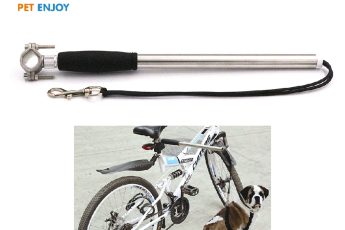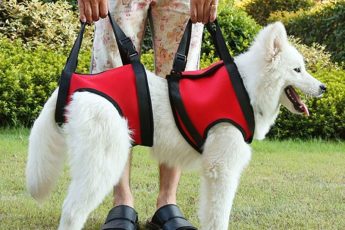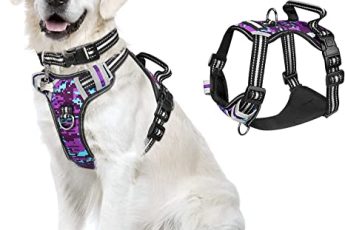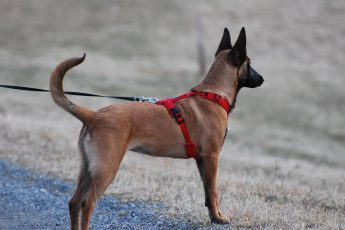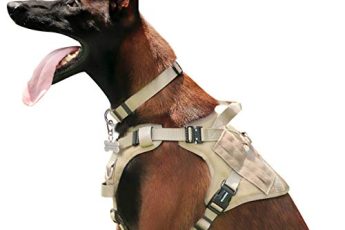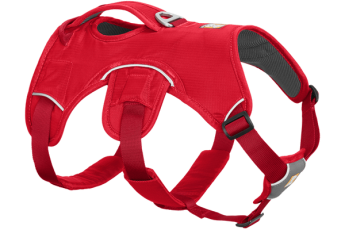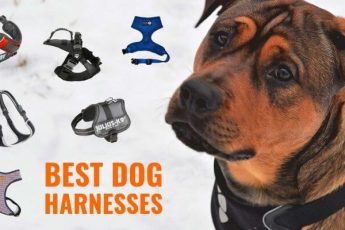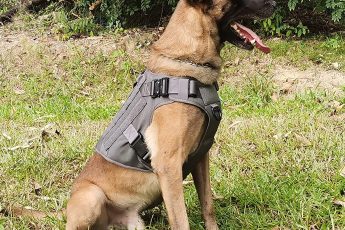If your dog has sensitive skin, you may wonder: Can a dog harness cause skin problems? Are some types more comfortable than others? Is my dog allergic to his harness? Read on to find out!
Below are some tips for choosing a dog harness that won’t cause your pet discomfort. Here are some tips for avoiding your dog’s discomfort and itching while wearing his harness.
This article will provide the information you need to make a more informed decision regarding which dog harness is best for your puppy.
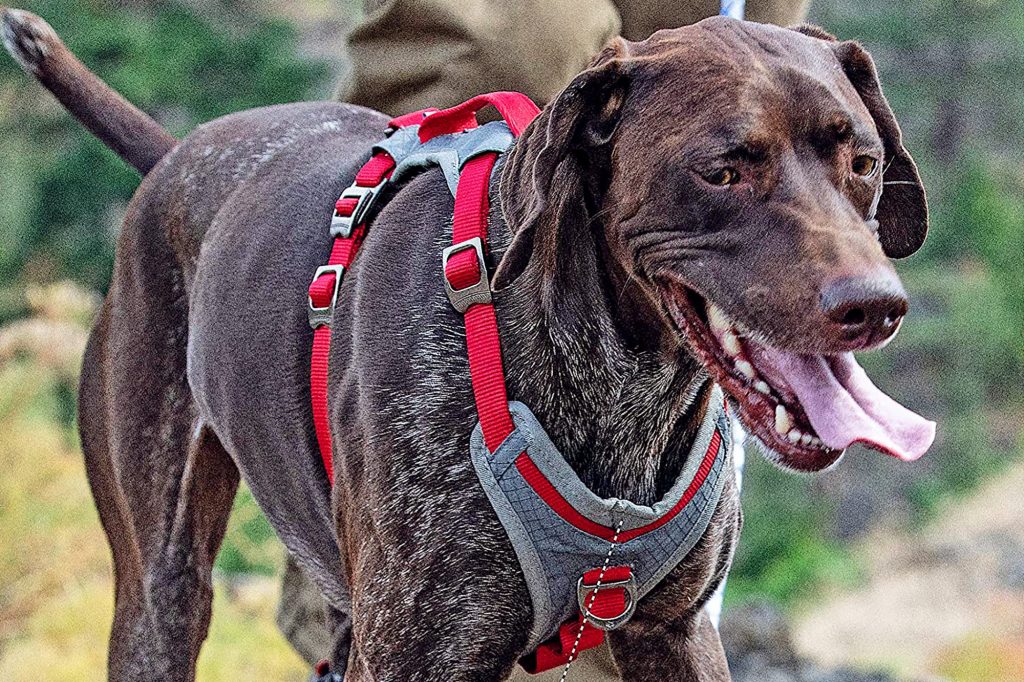
Best Dog Harnesses
| Image | Price | Buy | Title |
|---|---|---|---|
 | Buy Now | rabbitgoo Dog Harness, No-Pull Pet Harness with 2 Leash Clips, Adjustable Soft Padded Dog Vest, Reflective No-Choke Pet Oxford Vest with Easy Control Handle for Large Dogs, Black, L | |
 | Buy Now | COOYOO Dog Seat Belt,3 Piece Set Retractable Dog Car Harness Adjustable Dog Seat Belt for Vehicle Nylon Pet Safety Seat Belts Heavy Duty & Elastic | |
 | Buy Now | Mighty Paw Dog Car Safety Belt | Dog Seatbelt Ensures Pet Protection While Driving - Seatbelt for Dogs for Car - Dog Vehicle Accessory - Dog Car Seat Belt Attachment - Car Leash Restraint System | |
 | Buy Now | 2 Pack Dog Seat Belt Adjustable Dog Car Seatbelts for Vehicle Nylon Pet Safety Seat Belt with Elastic Bungee Buffer Reflective & Durable Car Harness for Dogs | |
 | Buy Now | Removable Dog Seat Belt Harness for Car, 3 in 1 Pet Dog Car Seatbelt Leash, Retractable Restraint Secures to Vehicle Headrest & Adjustable Reflective Bungee Dog Seatbelt Tether with Poop Bag Holder | |
 | Buy Now | Voyager Step-in Air Dog Harness - All Weather Mesh Step in Vest Harness for Small and Medium Dogs by Best Pet Supplies - Harness (Fuchsia), Small | |
 | Buy Now | BWOGUE 2 Packs Dog Cat Safety Seat Belt Strap Car Headrest Restraint Adjustable Nylon Fabric Dog Restraints Vehicle Seatbelts Harness |
Can a dog harness cause skin problems?
Can a dog harness cause skin problems? Your dog’s skin can develop chafing in various parts of its body, including its harness. It may also result in redness, rashes, and even hair loss.
You may need immediate medical attention if you notice any of these symptoms in your dog. Chafing is often a sign of a more serious underlying problem, such as a skin infection.
Chafing is a common condition in dogs. While it normally occurs on the inside of legs, it can happen anywhere that rubs against a dog’s skin, especially in hotter weather.
A skin infection occurs when the body’s yeast overgrows, causing intense itching and inflammation. Other conditions that can cause itchiness in dogs include hyperthyroidism, medications, and infections.
Why does my dog itch with a harness?
If your dog seems to itch while wearing a harness, there may be a few reasons. One of the most common reasons is that your dog pulls against the straps, which can cause chafing.
Fortunately, chafing can be prevented by training your dog to wear a harness properly. Generally, this will take a week to a few days, but it may take longer if the chafing has lasted several days.
While you can’t force your dog to wear a harness, it should be comfortable for your dog. A harness should fit snugly against your dog’s body to prevent itching.
It should also have adjustable straps so that it stays on your dog’s body without pinching its skin. If your dog is uncomfortable wearing a harness, try adjusting the straps. You should ensure they’re the right height and length for your dog.
What is the most comfortable harness for dogs?
A good dog harness should be comfortable for your dog. There are several different designs. For smaller breeds, some harnesses combine front and back clip designs. A good harness will help reduce pulling and lunging.
This article will review a few popular styles and what you should look for when choosing one. Listed below are the benefits of each type of dog harness. All of them can potentially improve your dog’s mobility and overall happiness.
A good harness is made from soft fabric designed to be comfortable. Consider a back-clip design if you’re looking for a harness that won’t be too bulky. A back-clip harness isn’t the best choice for a pully dog, as it can be uncomfortable.
Small dogs are also prone to slipping out of their collars, damaging their neck. A small-dog harness can give you peace of mind while out and about with your tiny puppy.
Is my dog allergic to his harness?
If your dog is scratching and licking at his harness, he could be allergic to metal buckles, nylon, or dye used in the harness. These materials can cause reactions in sensitive skin, which is especially important in armpits and belly areas.
Some common signs include bald patches, hives, or blister-like lesions. If your dog is allergic to a certain harness material, you can consult your veterinarian to check its skin.
Luckily, nylon is not a common dog allergen, so a patch test may be the only option. Veterinarians often recommend a patch test (or intradermal skin test) where the suspected allergen is injected beneath the skin in a specific pattern.
This can cause a localized allergic reaction on the dog’s skin. If your dog has developed skin allergies to nylon, you can eliminate it from your dog’s environment by avoiding harnesses made from nylon.
Are harnesses bad for dogs’ shoulders?
Harnesses can be bad for dogs’ shoulders. A dog can’t easily move around while wearing a harness, and the rest of the body can also be affected. Many dog harnesses cross the shoulder, restricting a dog’s movement.
The sled dog harness is a good example of a harness that does not cross the shoulder. Other harnesses that cross the shoulder include fly balls and protection dog harnesses. Finally, Y harnesses can rub on a dog’s shoulder, particularly if they are too tight or fit improperly.
If you are considering purchasing a dog harness, it’s important to know that not all dog harnesses are the same. While some may be better, you should consult your veterinarian before deciding.
Some harnesses may cause your dog pain, so be sure to read reviews of different harnesses to determine whether or not they’re right for your pup.
Why Does My Dog Hate His Harness?
If you’re wondering why your dog hates his harness, read on. We’ll discuss how to de-sensitize your dog to a harness, how to desensitize your dog, and which harness is the easiest to put on. This article will also tell you which harness is the most comfortable for sensitive skin.
Also, learn why your dog is calmer when wearing a harness. This article will give you information on the benefits of leather dog harnesses.
Why does my dog hate putting his harness on?

If your dog does not like to wear a harness, the problem is likely to be rooted in its fear of it. Harnesses can be scary for a dog, particularly if it is young and has never worn one before.
However, harnesses should be a positive experience for both the dog and its owner. Here are some tips to make the harness experience as positive as possible for you and your dog.
Observe your dog as you try to put the harness on. Do they startle at the sound of the clasps? Do they jump in excitement? If so, try to find out the cause of the negative association.
Dogs remember events in their own way, so if they are startled while wearing a harness, they may associate it with the stressful experience and refuse to wear it again. Harnesses are often the result of bad experiences for dogs.
How do you desensitize a dog harness?
The first step in training a fearful dog to tolerate a harness is desensitization. You can gradually increase your dog’s difficulty by exposing your dog to the harness at low levels.
Then, use counterconditioning to help your dog associate the harness with a treat reward. After the desensitization process, you can put the harness in a room your dog often visits.
If your dog seems uncomfortable wearing a harness right away, use a lure to entice him to come closer. For example, you could put a small amount of peanut butter on your fingers to encourage your dog to approach you.
Try this as often as possible until your dog gets comfortable with the harness and is not afraid to use it. As your dog becomes more accustomed to the harness, you can clip it on and repeat.
Why is my dog calmer with a harness on?
One of the most common questions about harnesses is, “Why is my dog calmer with a harness?” The answer is simple: your dog is not only safer but also calmer. He will be less likely to bark or get in trouble wearing a harness.
It’s also a good way to train him to be calm. Harnesses work like a thundershirt for your dog. All he needs to do to calm down is touch them. This will ensure he doesn’t go beyond his limits and get lost.
Another reason why a harness will calm your dog is because most dogs associate it with excitement. If you hook a harness to your dog, he will immediately associate it with walking, which is an excellent reward. When he sees that harness, he will associate it with excitement and go on a walk.
When you give him a treat, he will stay calmer. It’s important to remember that a harness is only a tool. Using it often is best, as more exposure will help your dog acclimate to it.
Which dog harness is easiest to put on?
There are many benefits to using a safety harness on your dog. It makes the entire process easier and is recommended by many dog trainers. Safety harnesses are a part of soft dog collars and incorporate many features.
They can make walking and training your dog a breeze. Below are some benefits of using a safety harness on your dog. If you’re looking for an easy-to-put-on harness for your sensitive-skinned friend, this harness is a great option.
Comfortable: A quality dog harness is designed to be easy to put on and remove. Its design is made from soft, high-quality materials and has easy-to-adjust straps.
It features a chest ring that moves minimally when pressure is applied from a leash. It also has adjustable straps and a girth that prevents chafing.
Is coconut oil good for dogs?
There is a big debate over whether coconut oil is good for dogs. It has many benefits for humans and dogs, including improved digestion and coat health. The medium-chain triglycerides (MCTs) in coconut oil also aid digestion.
Additionally, the MCTs can reduce coughing and alleviate the symptoms of allergy-related skin issues in dogs. So, is coconut oil really good for dog harness-sensitive skin?
Coconut oil is an excellent addition to dog treats, such as peanut butter. A tablespoon of coconut oil can make a tasty treat for your pup. It can even be a binding agent in a peanut butter treat. You can use it in a pinch as a substitute for peanut butter.
The secret is to choose the right amount based on your dog’s skin type. Make sure you select a product sourced from a healthy, ethical source so that your dog isn’t allergic to it.

